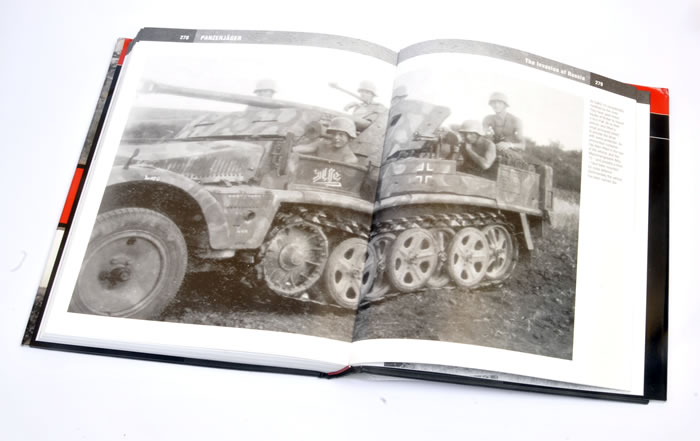|
|
|
|
| Home > Reviews > Britain > Osprey Publishing The History of the Panzerjäger Volume 1 – Origins and Evolution 1939-42 by Thomas Anderson |
The History of the Panzerjäger Volume 1 – Origins and Evolution 1939-42
Osprey Publishing
by Thomas Anderson
Reviewed by Al Bowie
Summary
Title: |
Osprey Publishing |
ISBN: |
978-1-4728-1758-7 |
Media and Contents: |
Hard Cover; 303 pages. |
Price: |
GBP£30 plus shipping available online from Osprey Publishing's website |
Review Type: |
First Read |
Advantages: |
Details the development of German Panzerjager forces of the early war period. Detailed history well supported by photos |
Disadvantages: |
None noted. |
Recommendation: |
This title is not just aimed at the modeller, history buff etc but would not be out of place in the library of a professional scholar on artillery and military tactics. I found it easy to read and eagerly await the second volume. |
FirstRead
Thomas Anderson is well known to anyone with an interest in German AFVs of WWII and continues to add to the available knowledge pool on German Armour and Artillery of WWII from the outbreak of war in 1939 until 1942.
Thomas has already written many books and articles for Osprey books and other publishers on the subject of German Armoured Fighting Vehicles of WWII on subjects within this timeframe and this new hard cover title is packed full of detailed information pertaining to the development of the German Panzerjäger arm of early WWII.

Germany used a number of Panzerjäger (loosely translated meaning Tank Hunter) in supporting roles throughout WWII in towed and self-propelled versions. Germany was innovative in the use of these forces choosing to use these mobile anti-tank forces in offensive as well as defensive roles. They were often a decisive factor in battles particularly in the North African campaign snatch victory from defeat many times. This is the first volume in a two-part series covering the origins of the force and equipment and its development as new threats were met.
The book packs a lot into the 303 pages and covers origins, weapons, tactics and organisation as they developed through the time period 1939-42. It is packed with a lot of previously unpublished wartime photos, combat reports backed by detailed charts and statistics. This book and its follow-on volume will give a thorough account of this very important and integral part of the German Military machine.
Thomas Anderson covers the many variants of Panzerjäger artillery employed during Germany’s military ascendancy and measures their strengths and weakness. He uses period information and reports to understand how tactics were developed and evolved as different threats were encountered on the battlefield.
The book is presented in a logical format in 12 chapters covering the following
- Introduction
- Chapter 1 – Interwar years
- Chapter 2 - Spanish Civil War
- Chapter 3 – Early Heavy AT Weapons
- Chapter 4 – Poland
- Chapter 5 – France
- Chapter 6 – Preparing for Seelöwe
- Chapter 7 – Close Combat Weapons
- Chapter 8 – Technical Changes
- Chapter 9 – Preparations for Russia
- Chapter 10 – North Africa
- Chapter 11 – The Invasion of Crete
- Chapter 12 – The Invasion of Russia
- Index
I found this an excellent title covering a fascinating subject that I normally find myself studying from the other side. It captivated me and answered a lot of the questions it raised in the earlier chapters. The photo selection is excellent with many appearing for the first time in print. They were supported by excellent captions and were large and clear. I was impressed by the depth of research and particularly the fact that obscure and rarer weapons were discussed and particularly the reasons for their development.
This title is not just aimed at the modeller, history buff etc but would not be out of place in the library of a professional scholar on artillery and military tactics.
I found it easy to read and eagerly await the second volume.
Available online from Osprey Publishing and specialty book shops worldwide www.ospreypublishing.com





